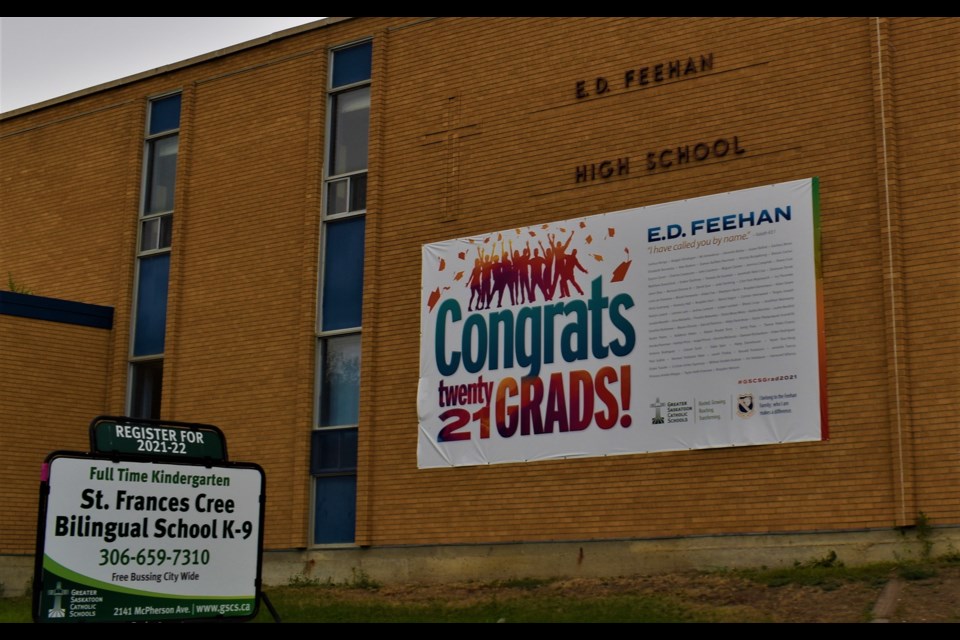SASKATOON — The First Nations, Métis, and Inuit Education Learning Community has been supporting teachers under the Greater Saskatoon Catholic Schools on how to properly approach discussions about the residential school system and its effects on Indigenous Peoples. FNMIELC is an internal group of educators within GSCS.
GSCS Communications Consultant Derrick Kunz said teaching the history of the residential school system is part of the curriculum and teachers have been following a professional discretion approach in determining what’s best to discuss in their classes.
The FNMIELC — composed of Cree, Dene, and Métis educators — has supported all the GSCS teachers by training and professional development on what topics to discuss for each grade. GSCS has also equipped all schools with the adequate resources.
“We always consult with our elders, and we are very fortunate to have seven elders on staff who share their stories and truth with our schools, teachers, and students. The school division provided professional development for all teachers (and other staff) on the National Day for Truth and Reconciliation (Sept. 30) through a series of guest speakers,” said Kunz. “Learning and professional development is ongoing. The truth and history of residential schools can live in many subject areas of the curriculum for both elementary and high school. The FNMIELC helps classroom teachers develop a thorough understanding of Indian residential schools and their impacts — that way it becomes easier to embed into many subject areas.”
Kunz added that history, social studies and Indigenous studies were the right courses in teaching IRS, but there’s also a correlation in health, sciences, and arts.
“English Language Arts is another easy place to create a learning experience for IRS because teachers can still teach and meet all the necessary parts of literacy from K-12 but simply switch up the content of the literature and create a cross-curricular learning opportunity that will benefit all students.”
Kunz said FNMILC education consultants have always been supportive and details on the curriculum for Saskatchewan, including treaty education, are available on the provincial government’s website: https://www.edonline.sk.ca/webapps/moe-curriculum-BB5f208b6da4613/Home?language=en.
“If teachers come across questions that they are not quite confident in addressing, they have consultants who can support the classroom learning journey through job-embedded support from the FNMIELC,” said Kunz. “Residential school history falls into the Saskatchewan curriculum in multiple areas. It is mandated that Indigenous content be integrated into all subject areas, so this gives the opportunity for residential schools to be taught in all subjects.”
The residential school’s truth and history is also mentioned in the 8th-grade treaty education curriculum where it helps assess the impact of the residential school system on First Nations communities.
Some of the indicators in the class are the comparison of First Nations peoples’ stories who attended residential schools with the experiences students had in their own schools. How Indigenous Peoples were forced to learn languages and cultures other than their own is also investigated, along with knowing how Indigenous Peoples communities deal and heal from the abuses they experienced while attending residential schools, and assessing the importance of the apology by the Canadian government per the recommendation from the Royal Commission on Aboriginal Peoples.
It’s a bit different in high school with Native Studies and Social Studies as the two main subjects that offer a deeper discussion into the history and lasting impact of residential schools.
Interactions and interdependence of Nations, political decision making, culture, governance, aboriginal perspectives, and aboriginal and treaty rights are the units taught under Native Studies.






